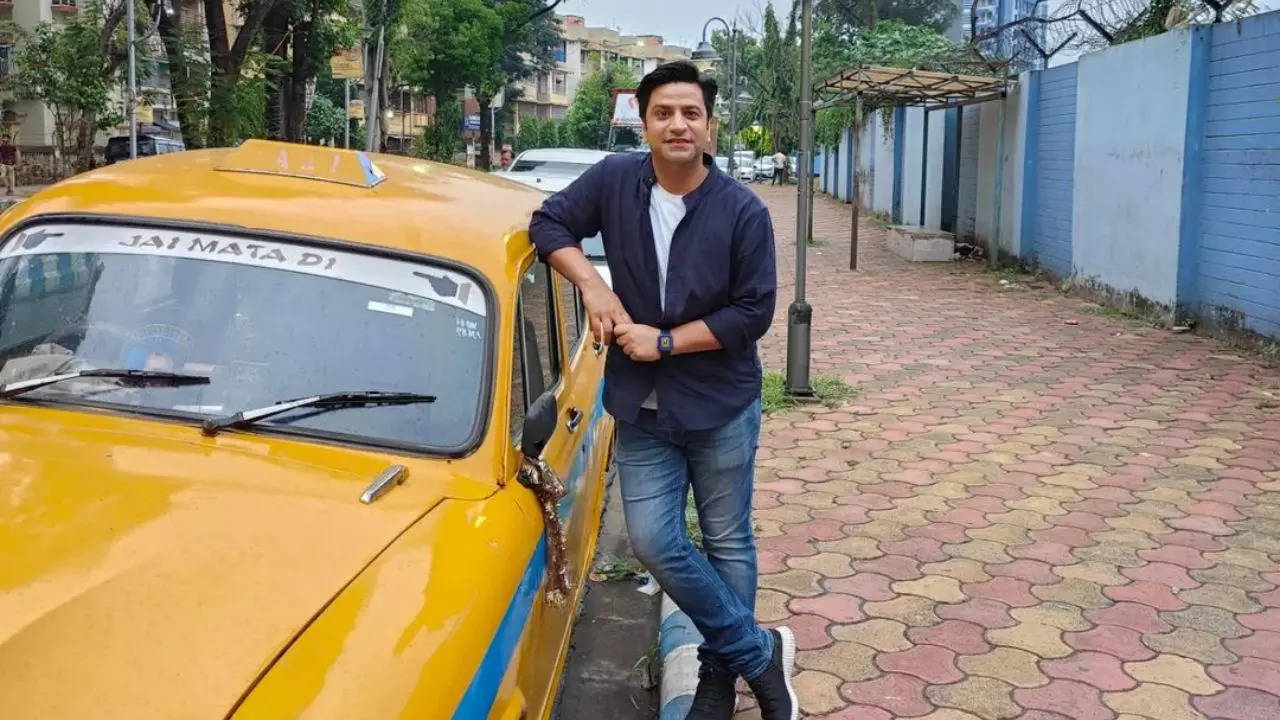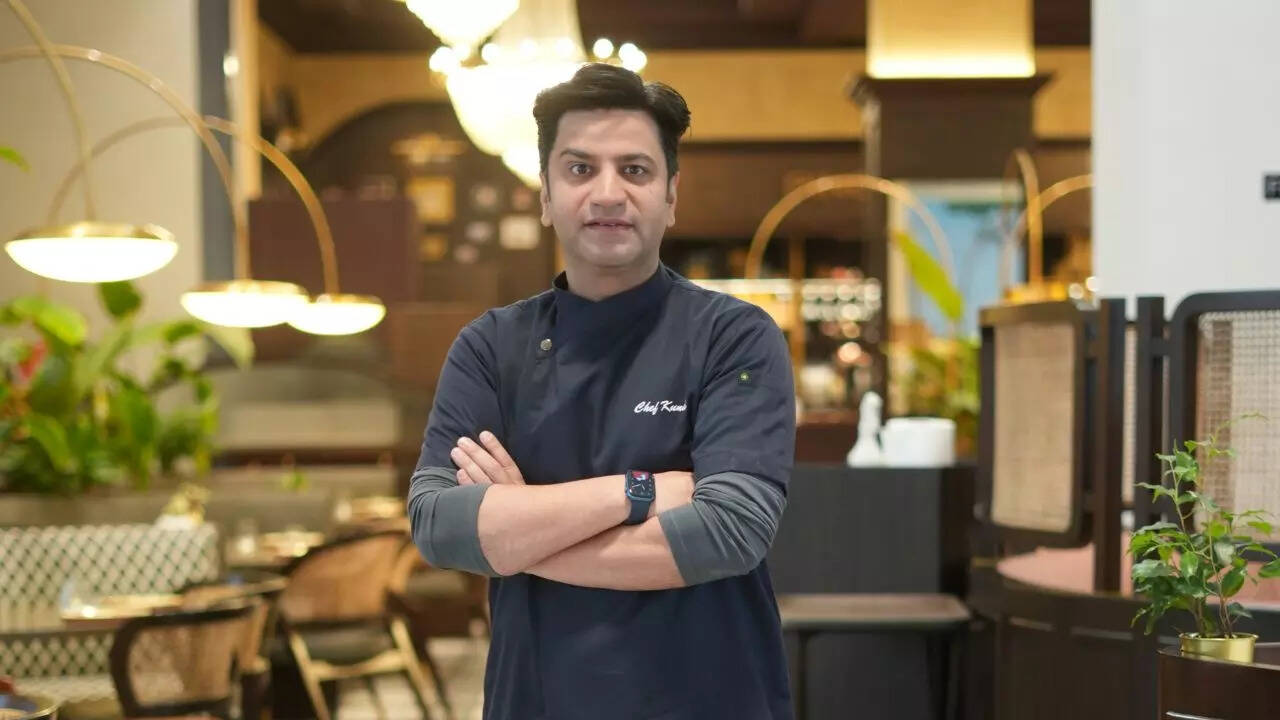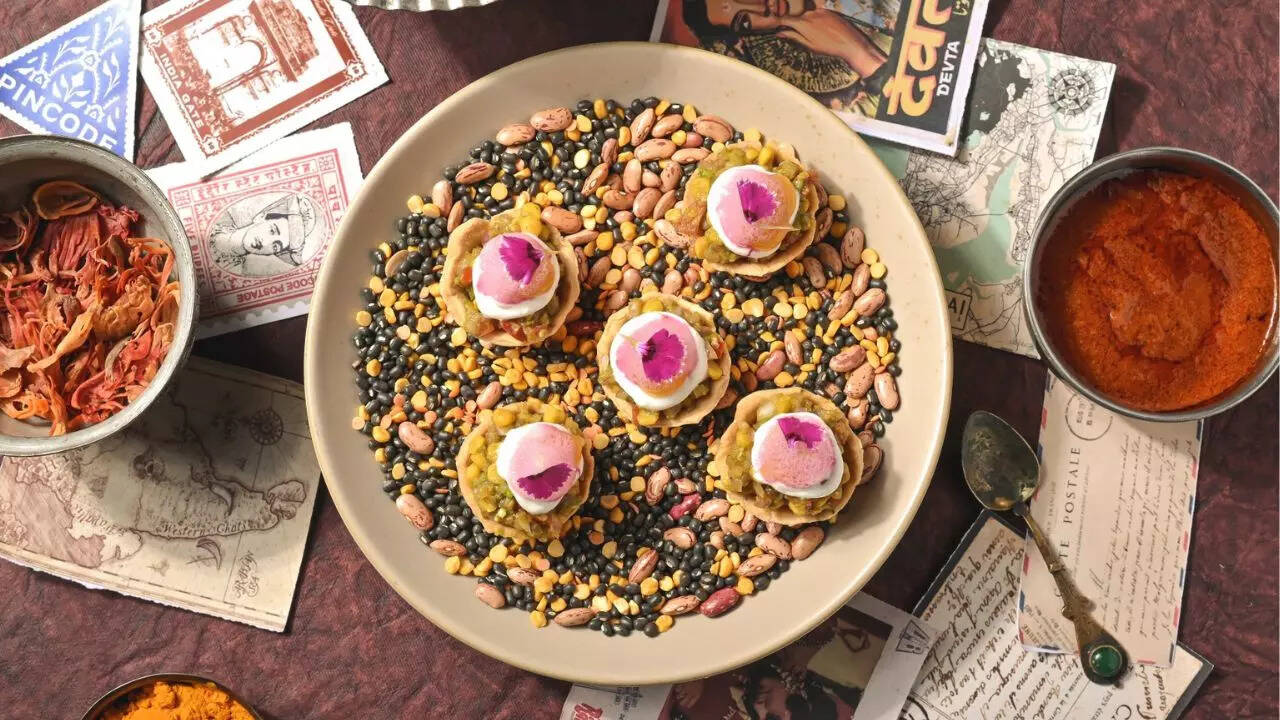Chef Kunal Kapur On How Regional Indian Food Can Change History
Indian cuisine is reaching unprecedented heights of popularity and renowned chefs like Kunal Kapur are leading the charge to showcase the rich tapestry of India's regional flavours. Pincode, Chef Kapur's brainchild, celebrates this diversity by curating dishes from every corner of India and he's taken it on the road with the Pincodes To Plates pop-up in Mumbai.

Chef Kunal Kapur travelled India to find the right dishes for his menu at Pincode Image courtesy: @chefkunal/Instagram
Around the world, Indian cuisine is hitting an unprecedented level of popularity. The dated concept of ‘curry’ or ‘naan bread’, being the only flagbearers of a diverse nation are fading away, and people are opening up to the variety that exists within Indian food. There are many routes through which people are being introduced to India’s food, and chefs are on the frontline of this movement. Some of the world’s top culinary minds are finding ways to introduce audiences to new ideas in innovative ways, such as internationally known celebrity chef Kunal Kapur’s venture Pincode.
Launched in Dubai, with a new address in Delhi, and regular ‘Pincodes To Plates’ pop-ups which has most recently landed at Neuma in Mumbai, Chef Kapur has designed a concept which celebrates the spectrum of Indian cuisines. From every corner of the country, he’s plucked dishes that embody the spirit of their home states and is presenting them together to evoke nostalgia, and memories and remind diners of all the culinary treasures India has to offer.

We caught up with Chef Kapur to learn more about what made Pincode a reality.
What does the term ‘regional cuisines’ mean to you?
Regional Indian cuisine is the real cuisine of India, which is mostly served at home till date. Like any other cuisine in the world, Indian cuisine is driven by the restaurants, which have taken their own interpretation of the local Indian cuisine and have taken the liberty to add or subtract any ingredient or style of cooking to make it a more pleasurable dining experience. But regional Indian food, in my opinion, is still the food that is unadulterated, honest the way it is, the way it was. Serving the same brings out the state food of India, the local street food flavours of India, and the home-cooked Indian food from different parts of the country, getting the produce, the nomenclature, the style of cooking into a restaurant, which has its charm.
What role do you believe India’s local cuisines play in showcasing Indian culture?
There is a popular saying that we are what we eat. And because there is this backward trend where we are going back to our roots, going back to our weather, referring to the old scriptures and discussing food with our grandparents about what was eaten. Why was it eaten? That becomes the unique selling point, or USP, for our cuisine and our understanding. Indian chefs have been at the forefront of mastering international cuisine. And we have always looked at somebody and tried to become them. Our own identity comes from our food, our spices, and our style of cooking, and that is what is the biggest showcase.
Today the world is turning towards India, whether it's the economics or the politics of India, but at the same time, it's also the cuisine and the lifestyle, whether it's through yoga or Ayurveda, and that is where it becomes our role to have that uniqueness, the USP, which is our own culture, the festivities, the foods that are served across our big nation, which is so varied, and that becomes something so unique to sell. It's like France is known for its wine, its cheese, and its style of cooking. Italy is known for its pasta, its cheese, its wine and hams, and there are so many ingredients that you know you name that country; it is known for a certain food. Similarly, India has to move away from or move on from the butter chicken, naan and tandoori that we normally are associated with and talk regional,go regional.

What are some of the most exciting meals you’ve experienced recently in Indian food?
Pincode is all about researching regional Indian food and getting them as is or with a bit of a tweak onto our plates. The most recent one that I found is from Surat, it's called Khavsa, which we are presenting now at the pop-up with Neuma and Khavsa is a Gujarati version of Khow Suey, which comes from Burmese cuisine all the way to Surat. It is said that at some point, this Burmese influence of making Khow suey which is a nice spicy curry with noodles and veggies could be with chicken and other meats as well, was pretty popular and somebody started to give it a Gujarati twist by adding a lot of Farsan. So it's a typically vegetarian dish sold on the streets of Surat especially, and it has this uniqueness of Indian flavours getting adapted into a foreign dish and becoming so popular, and that makes it very Indian again.
Can you tell us about the inspiration behind Pincode?
Before the advent of smartphones and map apps, there were Pincodes. Postal addresses were very important because your primary way of communication even before emails was writing letters. The most important thing is that you could mention the entire address, but if you forget to write the right Pincode, your letter won’t reach the destination, you can miss a digit or two but Pincodes are very critical. In our personal belief, we feel that most of the good Indian food is still trapped in those bylanes in different parts of India, which are best denoted today by the Pincodes. For example, if I'm from Delhi, if I say Delhi 6, it's a given that I'm talking about Parathe vali gully, in old Delhi, so just these swaad ki gali, as you say, are best denoted by these Pincodes. Through my travels and through growing up in Delhi, as a typical Punjabi family, a Punjabi boy in a joint family, both coupled together, I've picked up those Pincodes where I feel their best of foods and got them together. So the cluster of PIN codes with those specific dishes mix, the menu has been good.
How has the response to regional Indian dishes been in India and abroad?
I think Indian food has long been internationally synonymous with certain Punjabi dishes or maybe biryani or naan. It's time to move on, and for the world to move on to other treasures within Indian cuisine is when the chefs and the people in the country move on and start appreciating our own food. So whether it's your humble Amritsari Bhatti Ka Murg or a crispy Kerala-style fried chicken, whether it's, your Elaneer Payasam or Nalli Nihari from Hyderabad, we need to bring these out as the star dishes. And that's why if you look at our pop-up menus, you won't find anything conventional. We are not here to serve you butter chicken and Dal Makhani just because you're from Delhi. We are here to sample our specialities, and our signatures, which are very regional, are very different from each other. So if you have a look at our menu as well, if there is a Sindhi dish, then you will find something from Bengal as well. If there is a Kerala dish, you will find something from UP as well. So there is so much of India that you see on your plate, that there is no one taste or one dish that the flavours that you sample is going to follow through with the next dish that you order.

What are some of your favourite Indian dishes and what would you say is your go-to comfort food?
I think one of my favourite Indian dishes is momos, at a certain point, I'm sure if I quote the right side of history it goes that it’s the Nepalese Indians who started making these dumplings. There could be certain Asian or Tibetan influences as well. But momos have become very Indian. It has nothing to do with the Nepalese style of cooking or the Asian or Tibetan style of cooking it has found its own ground and acceptance. So personally, one of my travels I remember I was doing research on chillies, and that's what took me to Darjeeling about five years back and that's where I found that momos are served in Darjeeling with a chilli pepper called dalle khursani, which is like the mother of all chillies. I mean, it's such a beautiful right bright colour. But looks can be deceiving. It's so deceiving because one little bite of it can just send you bonkers. It's so spicy. And a paste is made using this chilli, which is super spicy. But obviously, you mellow down with oil and other things and you use the oil more than the chilli because that carries the flavour. Then you go further east you will find that Momos are served with and in curries, so one of our dishes on the menu is curry momos with liquid sunny chilli paste, and that is my go-to comfort food.
As a celebrity chef how do you feel your platform gives you unique access to promoting Indian culture?
If you are celebrated for a certain art that you do, there is something that you bring to the table, which people look up to or listen to, then it becomes a certain model obligation that you bring the right things you talk about the right things. In India, tourism has long been for the different beautiful places that we have from the Himalayas to the Kanyakumari. But I think food tourism is something that we don't talk much about. And that's a goldmine. It's sitting on a goldmine because we have so much to offer. And that's where I think the entire Indian cuisine potential comes out. If we start talking about and people start understanding the different flavours and dishes that we do. So if you look at Southeast Asia, the first thing people look at is eating in streets, because it's so friendly and most of the economy with tourism along with hotels and restaurants is selling food onto the streets, and the moment you enter Europe, the first thing that you want to try in Greece is a certain cheese, you are in France you want to try a certain bread, you are in Spain, you know you want to try certain ham or meat. And they are suppliers to the world, you'll see the story of Parmigiano Reggiano, where it's only made in certain restricted areas and methods and only that can it be called Parmigiano Reggiano and the world craves it. We have it here. In any part of the world, you’ll see the power of Parmigiano Reggiano, the power of food and the food economy. We need to make our own stars we need to talk about maybe our basmati rice to our mangoes. There's a big story then.
Chef Kunal Kapur's special menu will be available from the 23rd - 28th April at Neuma Mumbai. You can also enjoy the menu at locations of Pincode in Delhi and Dubai.
Trending:
End of Article
Subscribe to our daily Lifestyle Newsletter!
Related News





Chef Suvir Saran’s Menu At This Restaurant In Gurugram Is A Love Letter To Fusion Food

Kajal Aggarwal Opens Up About Separation Anxiety: Here’s How Parents Can Deal With It

Cricketer Shane Watson on His Newly Published Book The Winner’s Mindset | EXCLUSIVE

Janhvi Kapoor Turns Into The Best-Looking Cricket Ball As She Takes Method Dressing A Notch Higher

6 Books To Destroy A Weak Mindset








